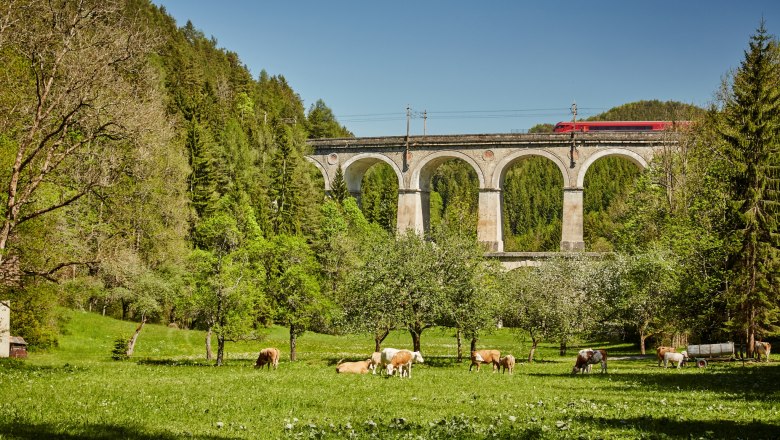UNESCO World Heritage site – Semmering Railway
The first mountain railway in Europe characterises the landscape of the Vienna Alps
Up to 10,000 men and women were involved in the construction of the first mountain railway in Europe. Led by leading engineer Carl Ritter von Ghega, it was a mammoth project, which still enthrals people from all over the world.
The idea that a locomotive could cross the Semmering Pass was the cause of much head shaking in the first half of the 19th century. Insufficient engine power and the steep slopes were not in its favour. That did not deter the engineer Carl Ritter von Ghega, however. Between 1848 and 1854, he supervised the construction of the first mountain railway in Europe – the Semmering railway. Today, the Ghega Museum in Breitenstein provides an insight into his eventful life. You can find out even more about the engineer on the Ghega circular route. It starts and ends at the Payerbach-Reichenau Railway Station, the station which was most frequented by the monarchy, and has a special flair.
A technical masterpiece
The core route from Gloggnitz to Mürzzuschlag includes 15 tunnels, 16 viaducts and 100 arched bridges, and overcomes 459 meters in altitude. From the “20-Schilling-Blick” on the Bahnwanderweg (Railway hiking route), you can see the impressive “Kalte Rinne” viaduct. The Doppelreiterwarte viewing point is just a few metres away, and offers a special perspective of the Semmering railway. To find out more about this UNESCO World Heritage site, visit the Informationszentrum Semmeringbahn (Information Centre) in Semmering Railway Station.
Wine and railway history
In Vinodukt Payerbach, a wine bar in the Schwarztal viaduct, visitors experience a multimedia show, and can taste wines from the areas along the southern railway line – this can be booked directly online.
Villas and grand hotels
As technology advanced, tourism gained momentum. Today, the Architecture in Semmering is characterised by numerous villas and hotels.

